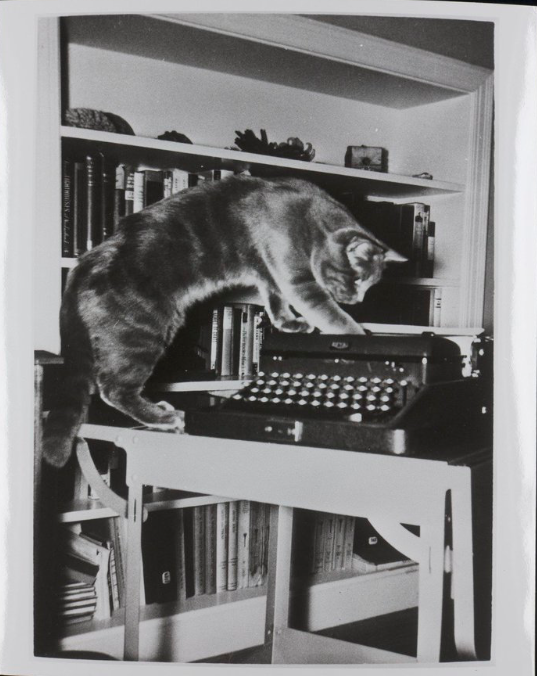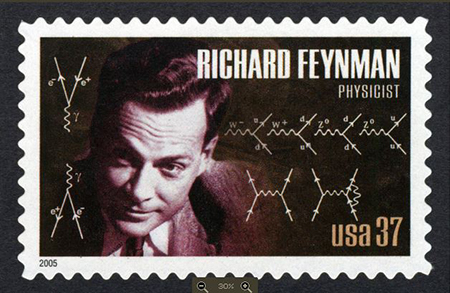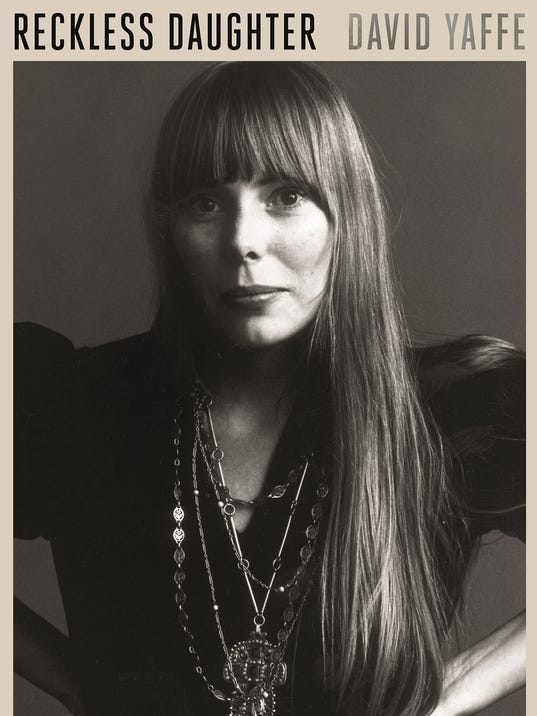Today is the 135th anniversary of the U.S. publication of Mark Twain’s Adventures of Huckleberry Finn, another installment in the novelization with great embellishment of the childhood of Samuel Clemens in Hannibal, Missouri, before the Civil War. Earlier installments included The Adventures of Tom Sawyer.

Cover and binding of the first edition of Mark Twain’s The Adventures of Huckleberry Finn. Mark Twain was the pen name of Samuel L. Clemens. Wikipedia image
It is THE great American novel. It is the novel in which America faces its coming-of-age, in the metaphysical ramblings of a 13-year-old boy in the dark, on a raft in the Mississippi River, with an escaped slave who is a good friend, and has saved his life. Huck Finn confronts reality: Should he do what the preachers say to do, or should he do the moral thing instead?
America, most of it, grew up with that realization, coming even as it did, a generation after the Emancipation Proclamation.
In a good school, one probably unaffected by the damage done to learning by George Bush’s “No Child Left Behind Act,” nor more recent purges of quality in the classroom such as “value-added teaching,” “Racing to the Top,” or Common Core State Standards or the folderol conservative backlash against education in general, Tom Sawyer is often a child’s introduction to Twain, and to book-length literature.
In my youth, Tom Sawyer was so popular with teachers, and reading aloud by teachers was considered such a great idea, I think I heard the book three times. I know Mrs. Eva Hedberg, in my third grade class in Burley, Idaho, read parts of it. My recollection is that Mrs. Elizabeth Driggs and Mr. Herbert Gilbert both read it to us, in fourth and fifth grade, in Pleasant Grove, Utah. (There were other books; I think I heard five of the Laura Ingalls Wilder books between those three teachers. Reading was golden to them. Mrs. Hedberg even gave me credit for reading encyclopedia, cover to cover, with each letter of the alphabet counted as a book. Our World Book volume for the letter S had disappeared; I’ve never been good at snakes.)
Twain once remarked that he didn’t think a youth could read the Bible and ever draw a clean, fresh breath of air again. Tom Sawyer can similarly haunt the life of a person, though generally to higher moral standards.
I had hoped they’d continue to The Adventures of Huckleberry Finn. When they didn’t, I borrowed it from the Pleasant Grove Junior High Library and read it through. I read it in the middle of the modern civil rights struggle, between 1963’s horrors and the Voting Rights Act of 1965, just as our Vietnam tragedy was really ramping up.
Wait. I remember Mr. Gilbert being stopped by a question on Huck’s father, Pap. This was in Deep Mormonia, in Utah County. Pap drank a bit. Well, that’s not accurate. Pap drank to excess, often. Most of my fellow students had no knowledge of the drinking of alcohol. Their parents didn’t drink, not in front of the children if they did, since imbibing alcohol was a violation of the LDS Church’s Word of Wisdom, a commandment that they treat their bodies as temples, not as amusement parks. That bodily purity rule put alcohol, tobacco and caffeine off-limits. Most of the parents simply didn’t drink. It would have put sugar off-limits, too, had there been enough sugar to abuse as late-20th century America did. Also, there was the issue of the LDS Church having significant holdings in the U & I Sugar Company (Utah and Idaho), which made sugar from beets, and blessed the church with a significant stream of income, from the Coca-Cola bottlers alone. But I digress.
Maybe we did hear some of Huck Finn. I didn’t hear all of it — mumps, or something. And I checked it out on my own later.
In any case, there is that point where Huck Finn grows up and becomes an American who recognizes the possible misfortune awaiting his decision to do something contrary to the advice of the moral poobahs of the moment. But there, on a raft in the middle of the muddy Mississippi, at midnight or near it, Huck decides to do the right thing instead of what the preachers tell him he should do. It’s a nation-turning decision.
. . . I went to the raft, and set down in the wigwam to think. But I couldn’t come to nothing. I thought till I wore my head sore, but I couldn’t see no way out of the trouble.
After all this long journey, and after all we’d done for them scoundrels, here it was all come to nothing, everything all busted up and ruined, because they could have the heart to serve Jim such a trick as that, and make him a slave again all his life, and amongst strangers, too, for forty dirty dollars.
Once I said to myself it would be a thousand times better for Jim to be a slave at home where his family was, as long as he’d got to be a slave, and so I’d better write a letter to Tom Sawyer and tell him to tell Miss Watson where he was. But I soon give up that notion for two things: she’d be mad and disgusted at his rascality and ungratefulness for leaving her, and so she’d sell him straight down the river again; and if she didn’t, everybody naturally despises an ungrateful nigger, and they’d make Jim feel it all the time, and so he’d feel ornery and disgraced. And then think of me! It would get all around that Huck Finn helped a nigger to get his freedom; and if I was ever to see anybody from that town again I’d be ready to get down and lick his boots for shame. That’s just the way: a person does a low-down thing, and then he don’t want to take no consequences of it. Thinks as long as he can hide it, it ain’t no disgrace. That was my fix exactly. The more I studied about this the more my conscience went to grinding me, and the more wicked and low-down and ornery I got to feeling. And at last, when it hit me all of a sudden that here was the plain hand of Providence slapping me in the face and letting me know my wickedness was being watched all the time from up there in heaven, whilst I was stealing a poor old woman’s nigger that hadn’t ever done me no harm, and now was showing me there’s One that’s always on the lookout, and ain’t a-going to allow no such miserable doings to go only just so fur and no further, I most dropped in my tracks I was so scared. Well, I tried the best I could to kinder soften it up somehow for myself by saying I was brung up wicked, and so I warn’t so much to blame; but something inside of me kept saying, “There was the Sunday-school, you could a gone to it; and if you’d a done it they’d a learnt you there that people that acts as I’d been acting about that nigger goes to everlasting fire.”
It made me shiver. And I about made up my mind to pray, and see if I couldn’t try to quit being the kind of a boy I was and be better. So I kneeled down. But the words wouldn’t come. Why wouldn’t they? It warn’t no use to try and hide it from Him. Nor from me, neither. I knowed very well why they wouldn’t come. It was because my heart warn’t right; it was because I warn’t square; it was because I was playing double. I was letting on to give up sin, but away inside of me I was holding on to the biggest one of all. I was trying to make my mouth say I would do the right thing and the clean thing, and go and write to that nigger’s owner and tell where he was; but deep down in me I knowed it was a lie, and He knowed it. You can’t pray a lie—I found that out.
So I was full of trouble, full as I could be; and didn’t know what to do. At last I had an idea; and I says, I’ll go and write the letter—and then see if I can pray. Why, it was astonishing, the way I felt as light as a feather right straight off, and my troubles all gone. So I got a piece of paper and a pencil, all glad and excited, and set down and wrote:
Miss Watson, your runaway n***** Jim is down here two mile below Pikesville, and Mr. Phelps has got him and he will give him up for the reward if you send.
Huck Finn.
I felt good and all washed clean of sin for the first time I had ever felt so in my life, and I knowed I could pray now. But I didn’t do it straight off, but laid the paper down and set there thinking—thinking how good it was all this happened so, and how near I come to being lost and going to hell. And went on thinking. And got to thinking over our trip down the river; and I see Jim before me all the time: in the day and in the night-time, sometimes moonlight, sometimes storms, and we a-floating along, talking and singing and laughing. But somehow I couldn’t seem to strike no places to harden me against him, but only the other kind. I’d see him standing my watch on top of his’n, ’stead of calling me, so I could go on sleeping; and see him how glad he was when I come back out of the fog; and when I come to him again in the swamp, up there where the feud was; and such-like times; and would always call me honey, and pet me and do everything he could think of for me, and how good he always was; and at last I struck the time I saved him by telling the men we had small-pox aboard, and he was so grateful, and said I was the best friend old Jim ever had in the world, and the only one he’s got now; and then I happened to look around and see that paper.
It was a close place. I took it up, and held it in my hand. I was a-trembling, because I’d got to decide, forever, betwixt two things, and I knowed it. I studied a minute, sort of holding my breath, and then says to myself:
“All right, then, I’ll go to hell”—and tore it up.
Huck’s deciding he’ll stand by his friend, a great human being, and “go to hell” instead of turning his friend in to continue a life in slavery, is the moment America grew up.
Now Americans pretend to have forgotten that growing up and the lesson Huck learned.
Another line jumped out at me from the start. It is a powerful lesson in government and democracy.
In the course of the novel, Huck falls in with a couple of crooks, the Duke and the King. They make their swindles in land deals on lands to which they don’t have title.
In Chapter XXVI (26), Huck accompanies the two swindlers to an orphanage of sorts. The Duke and the King decide to sell the orphanage, and leave town before their purchasers discover the sales are frauds. Early on in their hustings they collect a bag of gold. Then Huck sits down to dinner with one of the girls at the place, and he meets a few others who all treat him rather kindly, and in the course of an hour or two he begins to have second thoughts, fearing for the fate of the orphans.
Meanwhile with investments coming in so fast, the Duke and the King ponder leaving town earlier than planned, with at least the bag of gold, fearing they might be discovered. In the course of their conversation, overheard by Huck hiding in the room, the King works to convince the duke that most of the town’s people remain bamboozled:
Well, the king he talked him blind; so at last he give in, and said all right, but said he believed it was blamed foolishness to stay, and that doctor hanging over them. But the king says:
“Cuss the doctor! What do we k’yer for him? Hain’t we got all the fools in town on our side? And ain’t that a big enough majority in any town?”
Savor that one, and let it sink in for a bit. “Hain’t we got all the fools in town on our side? And ain’t that a big enough majority in any town?”
James Madison and Thomas Jefferson trafficked in democratic institutions at a metaphysical level, understanding men were no angels, as Madison put it, but with a bit of education a people should be able to rule themselves as well as, or better than, a tiny elite, even if that elite were educated. But they understood at the wholesale political level that a check was necessary on the people; in 1822 Madison defended free public education in a letter:
A popular Government, without popular information, or the means of acquiring it, is but a Prologue to a Farce or a Tragedy; or perhaps both. Knowledge will forever govern ignorance. And a people who mean to be their own governours, must arm themselves with the power which knowledge gives.
In Huck Finn, just over a half-century later, Twain was writing about applied politics, the theory, not the hypothesis, on a retail level. Without education for the masses, the group who cynically bamboozles for money or power wins once they’ve got every fool in town on their side.
We have a political system that is more subject to corruption due to lack of education than lack of money.
To an honest politician, this is a huge burden. You won the election? You got the vote of every fool in town? Then it’s up to you to act wisely, despite their foolishness. Robert Redford’s character in “The Candidate” pulls an upset win in a U.S. Senate race — the film closes with the candidate, rather scared, sitting down with the party-provided campaign advisor, and asking in all earnestness: “What do we do now?”
Happy anniversary, Huck Finn. Perhaps we should fly the flag today in honor of the publication of the book. We would fly it a bit nervously, perhaps.
What do we do now?

“Asleep on the raft” — Illustration by E. W. Kemble, from The Adventures of Huckleberry Finn
Twain himself hired E. W. Kemble to illustrate the first edition.

Yes, this is an encore post. Defeating ignorance takes patience and perseverance.
Save
Spread the word; friends don't allow friends to repeat history.




 Posted by Ed Darrell
Posted by Ed Darrell 
































